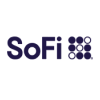First Mover Asia: It Won't Be Easy for Creditors to Untangle Three Arrows Case, Singapore Lawyer Says
The fallout continues from the crypto industry's slump, with fresh filings from Celsius, layoffs at OpenSea and a short-squeeze in Voyager's tokens. PLUS: We talked to a Singapore-based lawyer about the Gordian knot that is the Three Arrows bankruptcy case.


:quality(70)/cloudfront-us-east-1.images.arcpublishing.com/coindesk/LWJ3MUD5UFDRVLTLGBDJNKQIVM.jpeg)
:quality(70)/cloudfront-us-east-1.images.arcpublishing.com/coindesk/PFBKERQN3JHBJKTU5ZEFFPHU4E.png)
:quality(70)/cloudfront-us-east-1.images.arcpublishing.com/coindesk/OEM2JU5TSJHJHEYYDK24VHKB5A.jpg)
:quality(70)/cloudfront-us-east-1.images.arcpublishing.com/coindesk/GN764PSRANB25KQSTSM2JK7WGA.jpg 400w)
:quality(70)/cloudfront-us-east-1.images.arcpublishing.com/coindesk/63QGWL5LTBD3PCXUIQKUXHL2VM.jpg)
:quality(70)/cloudfront-us-east-1.images.arcpublishing.com/coindesk/5662CG46I5B7FI5YFPMVSFULTI)